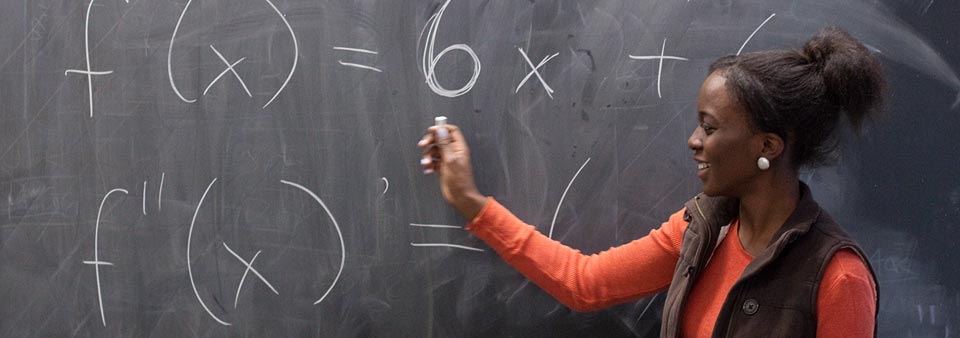Van Hiele Levels and Achievement in Secondary School Geometry
The van Hiele Level Theory
In the 1950s, Dutch educators Dina van Hiele-Geldof and Pierre Marie van Hiele developed an elegant theory regarding the acquisition of an understanding of geometry as a mathematical system. The van Hiele level theory attempts to explain why many students have difficulty with geometry and addresses what could be done to alleviate these difficulties. It has been applied in curricula in the Netherlands and the Soviet Union, and has many adherents in the United States.
The Cognitive Development and Achievement in Secondary School Geometry (CDASSG) Project
The CDASSG Project was designed to address a number of questions related to the van Hiele level theory. Among other efforts, the CDASSG Project tested approximately 2,500 students in five states enrolled in one-year geometry courses at the beginning and end of the school year in order examine whether it was possible to assign a van Hiele level to each student and the relationships between van Hiele level and achievement.
The results of the study are contained in an unpublished 231-page report “Van Hiele Levels and Achievement in Secondary School Geometry,” by Zalman Usiskin. This report has been available as ERIC document ED 220 288 but now can be downloaded from this Web site using a PDF reader such as Adobe Acrobat Reader (a free program available from the Adobe Web site). Overall conclusions from the study are found on page 89 of the report.
Some results of this and a related CDASSG study may also be found in the following sources:
Senk, Sharon L. Proof-Writing Achievement and van Hiele Levels Among Secondary School
Geometry Students. Ph.D. dissertation, The University of Chicago, 1983.
Senk, Sharon L. “How Well Do Students Write Geometry Proofs?” Mathematics Teacher,
78 (6): 448-456 (September 1985).
Senk, Sharon L. “Van Hiele Levels and Achievement in Writing Geometry Proofs.”
Journal for Research in Mathematics Education, Vol. 20 (3): 309-321 (May 1989).
Senk, Sharon L., and Usiskin, Zalman. “Geometry Proof-Writing: A New View of
Differences in Mathematical Ability.” American Journal of Education, 91 (2):
187-201 (February 1983).
Usiskin, Zalman, and Senk, Sharon L. “Evaluating a Test of van Hiele Levels:
A Response to Crowley and Wilson.” Journal for Research in Mathematics Education,
21 (3): 242-245 (May 1990).
Instruments
Three tests were used in the study: (1) Entering Geometry Test, a multiple-choice test covering standard content; (2) van Hiele Geometry Test, a 25-question multiple-choice test with 5 questions at each level; (3) three forms of a Proof Test, with each form containing 6 items. These tests and the scripts used in administering them are included in the report’s appendices. The interpretation of results of the van Hiele Geometry Test requires the report.
Requesting Permission to Use the Instruments
There is no fee for the use of these tests, although permission is needed to duplicate them. To request permission to use the Entering Geometry Test or the van Hiele Geometry Test, contact Zalman Usiskin at z-usiskin@uchicago.edu with the following information: (a) a description of your study in which the instruments are to be used; (b) an approximate number of copies to be made of the instruments used in your study; (c) assurance that you will write on each copy of the test: “Copyright ©1980 by the University of Chicago. Reprinted with permission of the University of Chicago.”; (d) assurance that you will send us copies of any written reports involving results using these instruments.
To request permission to use the Proof Test(s), contact Sharon Senk at senk@math.msu.edu with the information (a) through (d) as in the preceding paragraph.
2022 Update
The tests from this study have been used by teachers, researchers, and students of mathematics education in a variety of studies over the past 40 years. In 2022, the original creators of the test teamed with three other researchers to document its widespread use and to suggest revisions of the van Hiele Geometry Test. This 39-page paper can be downloaded from this site using the link here.
2023 Update
Denisse R. Thompson and a team of measurement researchers have run additional statistical tests on student responses to the van Hiele Geometry Test using structural equation models and cognitive diagnostic models, employing data from the field study of the third edition of UCSMP Geometry. This 36-page paper can be downloaded from this site using the link here.
Contact
UCSMP
1427 East 60th Street
Chicago, IL 60637
T: 773-702-1130
F: 773-834-4665
ucsmp@uchicago.edu



